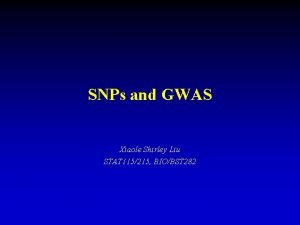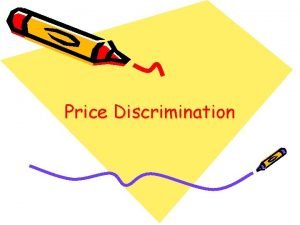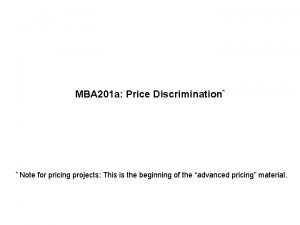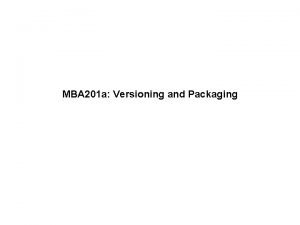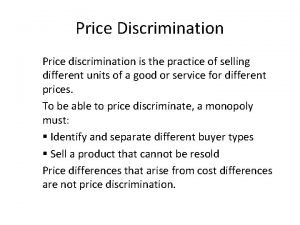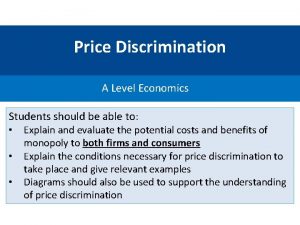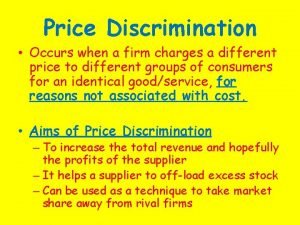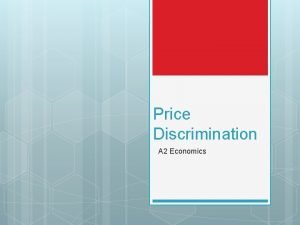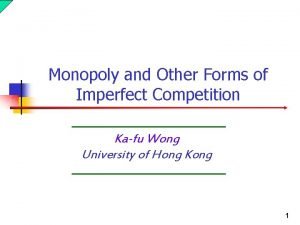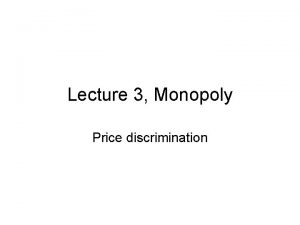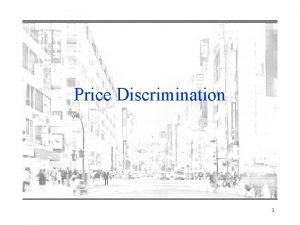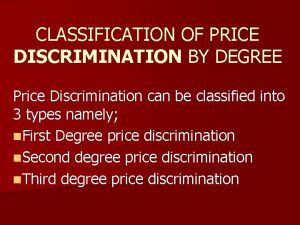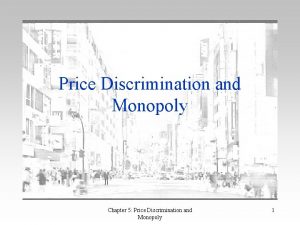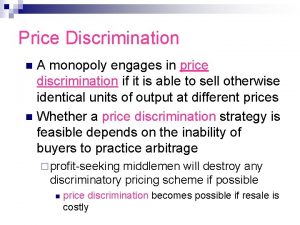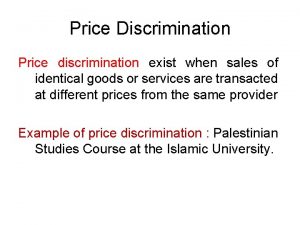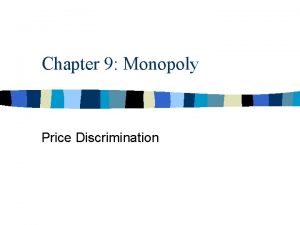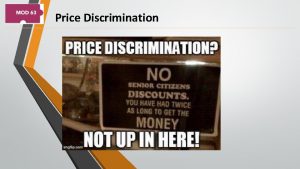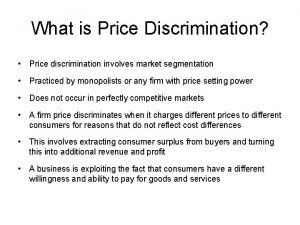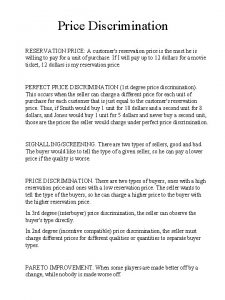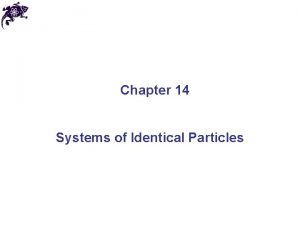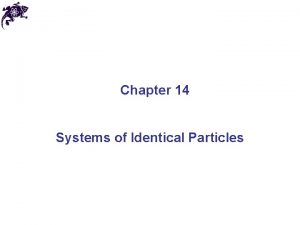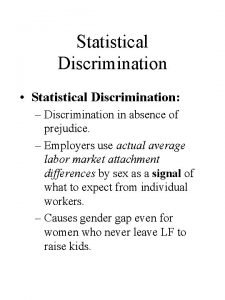1 Price Discrimination Identical goods produced at the




















- Slides: 20



1. Price Discrimination 價格歧視 • Identical goods produced at the same cost are sold at different prices to different buyers. • Different units of them are sold at different prices to the same buyer. 12/2/2020 笑笑小經濟

Price Discrimination 例 子 一 12/2/2020 笑笑小經濟

Price Discrimination 例子二 12/2/2020 笑笑小經濟

2. Sunk Cost • Cost is the highest-valued option forgone. Sunk Cost • “Bygones are bygones”. Money already spent and cannot be recovered are call SUNK COST. As such, sunk cost may differ from the current opportunity cost. • Because we involve neither current nor future costs, sunk cost should have no influence on deciding what is currently the most profitable things to do. In other words, it is irrelevant to any present or future decision making. Hence, SUNK COST is NOT a cost. 12/2/2020 笑笑小經濟

Sunk Cost 例子 12/2/2020 笑笑小經濟

3. Consumer Surplus • Consumer surplus • Given the quantity demanded, consumer’s surplus is that extra amount the consumer is willing to pay over and above what he actually pay. • Consumer surplus and different pricing arrangements • 1. All-Or-Nothing pricing • 2. Lump-sum fee/Membership fee • 3. Tied-Good Pricing 12/2/2020 笑笑小經濟

Consumer Surplus 例子 12/2/2020 笑笑小經濟

4. Present Value § All present or future decisions are made in present. Therefore, present value affects the investment decisionmaking. § The assumptions: i) no money ii)no risk in lending iii)no transaction costs in arranging loans iv)no non-transferable goods 12/2/2020 笑笑小經濟

Future Value and Present Value The following equations show the relationship between future value and present value. • Compounding formula: Future value=Present value x (1+r)t • Discounting Formula: Present value=Future value/(1+r)t 12/2/2020 笑笑小經濟

Marginal Rate of Time Preference • Measures the MV of present consumption. • Interest rate measures the price of present consumption. • in equilibrium, MRTP=interest rate 12/2/2020 笑笑小經濟

Factors affecting present consumption • Interest rate: a change in interest rate will lead to a movement along the demand of present consumption. • Time preference (MRTP): an increase (decrease) in time preference will shift the demand for present consumption outward (inward). • Permanent income: a increase in wealth will shift the demand for present consumption outward. 12/2/2020 笑笑小經濟

Present Value 例子 一 12/2/2020 笑笑小經濟

Present Value例子二 12/2/2020 笑笑小經濟

Social Cost • The social cost of an action is the full cost that is borne by the members of the whole society. • Private cost: the private cost of an action is the part of cost that is borne by the actor himself. • External cost: The external cost of an action is the part cost that is borne by others, without their consent. 12/2/2020 笑笑小經濟

Social Cost 例子 12/2/2020 笑笑小經濟



 Consumer products classifications
Consumer products classifications Identical by descent vs identical by state
Identical by descent vs identical by state Ano ibig sabihin ng price floor
Ano ibig sabihin ng price floor Where are goods produced
Where are goods produced Price discrimination real world examples
Price discrimination real world examples Deadweight loss in monopoly
Deadweight loss in monopoly First degree price discrimination
First degree price discrimination Student discount price discrimination
Student discount price discrimination Types of price discrimination
Types of price discrimination Versioning price discrimination
Versioning price discrimination Second degree price discrimination graph
Second degree price discrimination graph Perfect price discrimination
Perfect price discrimination Peak load pricing
Peak load pricing Hurdle model of price discrimination
Hurdle model of price discrimination Price discrimination occurs when a firm
Price discrimination occurs when a firm Objectives of price discrimination
Objectives of price discrimination Perfectly price discriminating monopoly
Perfectly price discriminating monopoly Calculus vs algebra
Calculus vs algebra Progressive tax
Progressive tax Merit goods vs public goods
Merit goods vs public goods Public goods dan private goods adalah
Public goods dan private goods adalah

